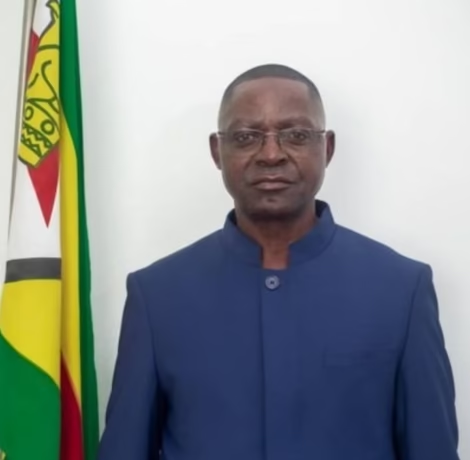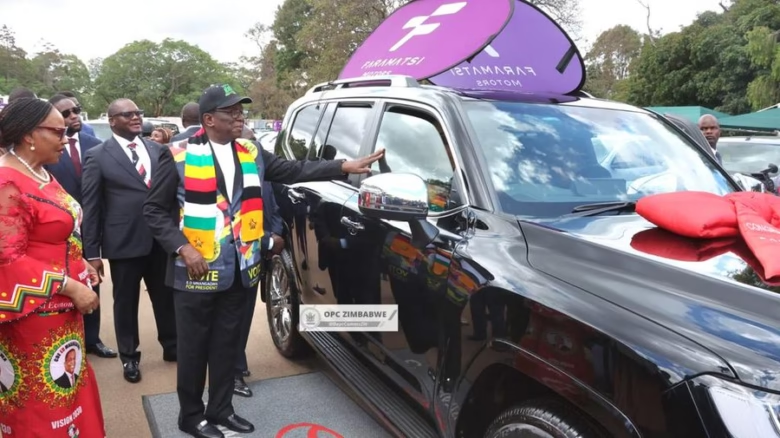
Zimbabwe’s energy sector is undergoing a remarkable transformation, signaling a new era of sustainability, self-sufficiency, and growth.
The forthcoming unveiling of project outlines by seven Captive Power Producers (CPP), with a combined capacity of over 1,000MW, marks a pivotal moment. Coinciding with the ground-breaking ceremony of the 720MW Titan New Energy project in Hwange, officiated by President Mnangagwa, these developments underscore the nation’s determination to address its energy challenges.
The innovative CPP model, championed by ZESA Holdings under the leadership of Dr. Sydney Gata, exemplifies forward-thinking energy policy. By shifting the responsibility for energy generation to major consumers, particularly multinational corporations in mining and smelting, Zimbabwe is not only alleviating pressure on government resources but also unlocking opportunities for private investment. This strategic move mirrors earlier successes, such as deregulating the fuel importation sector, which resolved supply bottlenecks almost overnight.
The benefits of this approach are manifold. By empowering large consumers to generate their own power, Zimbabwe can redirect resources toward addressing backlogs in maintenance, new connections, and operational improvements. This also enhances the nation’s energy security by diversifying sources and reducing dependence on imports, saving valuable foreign currency in the process.
Industrially, reliable energy is a game-changer. The CPP model promises to eliminate downtime, boost productivity, and enhance the competitiveness of Zimbabwean industries. By ensuring consistent power, the country becomes an attractive destination for foreign direct investment, fueling job creation and economic growth. Moreover, the integration of renewable energy technologies by these private players aligns with global sustainability goals, paving the way for a greener future.
The Titan New Energy project, in particular, stands out as a milestone in this evolving landscape. Its groundbreaking not only marks progress in addressing load-shedding but also symbolizes Zimbabwe’s commitment to achieving universal electricity access by 2030. This ambitious goal, coupled with the government’s push for energy self-sufficiency by 2025, positions the nation as a leader in innovative energy solutions.
Private sector involvement brings much-needed investment, expertise, and innovation to the table. The implementation of these projects, guided by principles of sustainability and environmental responsibility, ensures a lasting impact on Zimbabwe’s energy sector. The CPP model is not just a solution to immediate challenges; it is a foundation for long-term energy resilience and economic prosperity.
As Zimbabwe embraces this transformative phase, the role of captive power producers cannot be overstated. These projects are more than technical undertakings; they are a testament to the country’s resolve to chart its own path toward a stable, sustainable energy future. Together with visionary leadership and robust policy frameworks, Zimbabwe is poised to light up its industries, homes, and prospects for generations to come.
[13:11, 11/28/2024] Aldridge Dzvene Aldridge: Editorial: Tripling Grain Production – A Bold Step Toward Food Security
Zimbabwe is on the verge of a remarkable agricultural transformation, with the government announcing plans to triple grain production during the 2024/2025 Agricultural Season. This ambitious goal, a 347 percent increase, underscores a determined response to mitigate the devastating effects of the El Niño-induced drought and restore the nation’s Strategic Grain Reserves.
At the heart of this strategy is a targeted cultivation of 3.2 million hectares, with maize, the country’s staple, accounting for 1.8 million hectares. Traditional crops such as sorghum, pearl millet, and soya beans will complement this effort, reflecting a comprehensive approach to bolstering food security.
The government’s proactive measures inspire confidence. Over the past year, it has imported over 1 million metric tonnes of maize to cushion vulnerable families, ensuring that no Zimbabwean succumbs to starvation. This commitment to leaving no one behind is a testament to the Second Republic’s resilience and its unwavering dedication to the people.
The increased focus on the Pfumvudza/Inthwasa Programme is another critical pillar of this strategy. By expanding the minimum plots per household from one to four, the government is empowering families to diversify their crops, cultivating not only maize but also sugar beans, sunhemp, sunflower, and garden seeds.
Coupled with the provision of fertiliser and chemicals, this initiative is equipping farmers with the tools they need to succeed.
Encouragingly, the 2024/2025 season has brought normal to above-normal rainfall, providing a solid foundation for achieving this ambitious target. With timely input distribution and enhanced agricultural practices, Zimbabwe is well-positioned to reclaim its title as the breadbasket of Southern Africa.
Zimbabwe’s grain reserves currently stand at 253,665 metric tonnes, comprising wheat, maize, and traditional grains. This stockpile, though modest, is a vital safety net as the country ramps up production. The drive to rebuild the reserves reflects a long-term vision of food security that extends beyond immediate needs.
This moment also reaffirms the power of agriculture in nation-building. As President Mnangagwa often says, “Nyika inovakwa nekurimirwa nevene vayo!” Zimbabwe’s path to prosperity lies in the hands of its people, working the land with diligence and innovation.
The anticipated grain production surge is not just about feeding the nation—it is a bold step toward economic resilience. With surplus production, Zimbabwe could re-enter regional and global markets as a major grain exporter, generating foreign currency and creating jobs. This would not only enhance the nation’s food security but also contribute significantly to its Vision 2030 goal of becoming an upper-middle-income economy.
As the 2024/2025 Agricultural Season unfolds, Zimbabwe stands poised to defy the challenges of climate change and drought. Through visionary leadership, robust policies, and the tireless efforts of its farmers, the nation is writing a new chapter in its agricultural success story.
The fields of Zimbabwe are not just growing crops—they are cultivating hope, resilience, and a brighter future.




